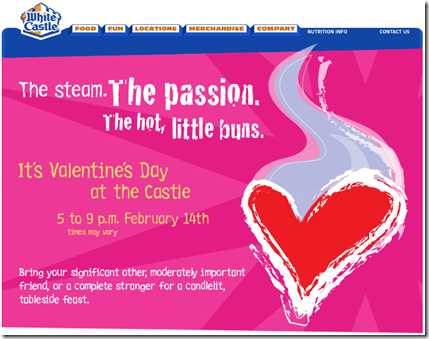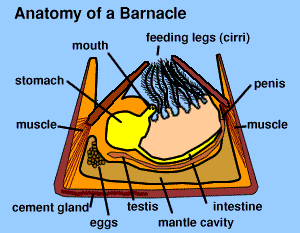I’m returning from a holiday hiatus with recharged batteries and major content changes to Digital Solid. Come back often or subscribe to find exclusive interviews with online news-makers, plus more news and tips you’ve told me you appreciate as marketers in an increasingly technological world.
 To kick things off in 2008, I’m thrilled to bring you an interview with Michael Beddows, CEO of the new projectstars b-to-b online social network. This site is part project board, part social network and part blogging cooperative. It’s a novel mix that has already attracted an impressive critical mass of participants.
To kick things off in 2008, I’m thrilled to bring you an interview with Michael Beddows, CEO of the new projectstars b-to-b online social network. This site is part project board, part social network and part blogging cooperative. It’s a novel mix that has already attracted an impressive critical mass of participants.
Q: projectstars has been around for almost four months. Has the growth you’ve seen in that time surprised you, or was it about what you were expecting?
MB: Considering that our marketing over the past few months has consisted entirely of word-of-mouth, we’re very pleased with both the quantity and quality of our membership growth. This organic growth has also provided us with some great feedback on how we can refine our equity blogging approach.
Q: In a blog entry you mention that there are generally three types of online communities, and they mirror the Malcolm Gladwell The Tipping Point connector types. Of the three, projectstars is a “Maven” network, where you’ve written, “Content is king … For those who are knowledgeable, these [Maven] sites are a great place to showcase expertise and get discovered.” Can you name other communities that follow this “maven model,” where members are encouraged to promote themselves and their expertise?
MB: LinkedIn has an Answers section where members can vie to be nominated as the “Top Expert.” The difference with projectstars is that our members are not restricted to a Q&A format and can participate in more engaging conversations. projectstars is also more amenable to search engine optimization, which means that our member contributions are more discoverable in search engines. It’s one thing to be seen as an expert within the confines of LinkedIn, quite another to be seen as an expert on the Internet at large.
Q: Your site says that you’re “blurring the line” between job sites and business/social communities. This is extraordinary enough, in that I’ve never seen another site that is certifiably both, as yours is. But what has struck me as more novel is that your business model sounds a lot like a cooperative. A week ago you conducted your first share giveaway, where 100 members with the most earned points receive their shares in the business. This sounds unique for a social network site. Is there any other community that you’ve modeled this against?
MB: We believe we are the first social network to offer members shares. We think this is the way any online community should operate as it’s the members who make the community. It’s quite possible that someday, many social networks and blog communities will become equity blogs, where members band together to form a cooperative.
Q: Speaking of blurred lines, I like the Facebook login feature, which allows anyone who is already part of Facebook to register with projectstars from a page within Facebook. I was curious how the tie-in would benefit me, and saw that friends in Facebook who are also on projectstars are immediately identified and added as a projectstars buddy. What a cool way to tie the two communities together. Has this Facebook connection helped spread the word about projectstars?
MB: With so many sites out there, anything which makes registration easier is good in our books, so the Facebook login helps in that respect. We are also developing a Facebook application so that your projectstars blogs will show up on your profile and others can vote on them – once this is completed we do expect that will help spread the word.
Q: Are you optimistic about future tie-ins with other social networks through OpenSocial? How is this work progressing?
MB: We are members of the OpenSocial development lists and are tracking progress closely, however OpenSocial specifications are still in development so we expect it will be later in Q1 2008 before we see anything from projectstars on this front. We are also investigating the possibility of projectstars itself being an OpenSocial container. projectstars members can already set up their own personalized page of projectstars content, RSS feeds, and widgets at my.projectstars.com so this would be an ideal place to host OpenSocial apps.
Q: Blogging is a great way for domain experts to show off their knowledge. On the other hand, many of these same people already have one or more blogs. Are you looking at ways to port “outside” blog content into your site, or do you simply want to encourage bloggers to move their tent within the walls of projectstars?
MB: We did investigate linking members blogs to the system, however there were two problems with this. First, the projectstars community structure means that automating where posts appear is not easily possible, and second we realize that although people do have their own blogs, they don’t always blog about one subject, and sometimes blog about personal/life issues. As we want to keep projectstars content focused on the topics provided by the 300 communities, we decided to enable blogging within the system.
Continue reading “ProjectStars CEO describes how this new site blends job board with social networking”


 To kick things off in 2008, I’m thrilled to bring you an interview with Michael Beddows, CEO of the new
To kick things off in 2008, I’m thrilled to bring you an interview with Michael Beddows, CEO of the new  As I pointed out in my post, this application is part of a larger trend. Namely, that of launching a shoestring site that is financially independent of a larger site, but completely dependent on it for survival. It’s an interesting paradox, and all but cries out for a new piece of jargon. You know, something to toss out casually during your next new media PowerPoint presentation.
As I pointed out in my post, this application is part of a larger trend. Namely, that of launching a shoestring site that is financially independent of a larger site, but completely dependent on it for survival. It’s an interesting paradox, and all but cries out for a new piece of jargon. You know, something to toss out casually during your next new media PowerPoint presentation.